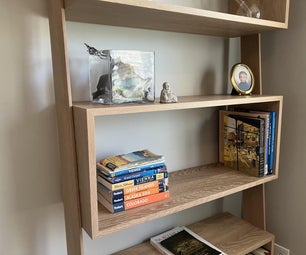Introduction: Restoring an Old Sled
My wife and I acquired an old sled on our last trip to New Mexico that had been sitting outside for probably 30-40 years. Because of the dry conditions, it was in reasonably good shape for the shape it was in! The wood was dry, but intact. The paint on the metal frame was bleached by the sun, but only had a little surface rust.
Because of the dryness of the wood and the condition of the paint, I decided to disassemble the sled and refinish it.
The tools used were as follows:
- electric drill & 1/4" bit
- wire brush
- small punch
- wrenches
- screwdriver
- rubber gloves
Supplies purchaced included:
- primer for metal
- tung oil finish
- sandpaper
- carriage bolts, nuts, & washers to replace the rivets
- zinc plated wood screws
Step 1:
The first thing I did was photograph the sled (top and bottom), and temporarily label each wooden part. I have found that a good set of digital prints are very valuable when it comes time to reassemble something you've taken apart.
The sled was riveted together with 3/16ths diameter rivets of various lengths. Since my rivet gun only works with 1/8th diameter rivets, I knew I would reassemble using carriage bolts. So, the first thing I did was drill out the end of each rivet and drive it out using a small punch.
As I removed each wooden part, I labeled it with a marker (in an area where it woudn't be noticed) so I would know exactly where it belonged.
The cross-pieces were all riveted in place, and the long boards were nailed to the cross-pieces.
Step 2:
With all the wood pieces removed, I sanded each piece, beginning with 120 grit paper and finishing with 220 grit.
For the finish, I decided to use tung oil. Tung oil is generally not my first choice in finishes, but it is very thin and is readily absorbed into the wood. Since this sled had set outside in the desert sun for several decades, I felt it could benefit from a penetrating type of finish. Anytime I use an oil-based finish like this, I always dispose of my rags inside of several plastic bags filled with water. Rags soaked in this type of finish have a tendency to catch on fire spontaneously if placed in a waste container.
Another word of caution -- use rubber gloves when applying this finish. They put warnings on the can for a reason!
I lost count of the exact number of coats of finish I used, but it was about a half-dozen. I would put on a coat, then wait 12 hours, then put on another. When the finish no longer soaked into the wood, I figured I was done.
Step 3:
While waiting for the wood finish to cure, I worked on the metal part of the sled. It had only slight surface rust in a few places, so I was able to wire brush it off by hand. I then sanded the metal with 220 grit paper. Where the old paint was tightly adhered to the metal, I simply sanded it enough to break the surface. Where the paint had chipped away from the metal, I sanded it aggressively and feathered the edges
After prepping the metal, I sprayed it with a rusty metal primer, and let it cure for 48 hours.
Step 4:
The final step was to spray the frame with red enamel.
After the paint had cured, I reassembled the sled using carriage bolts to attach the cross-pieces, and wood screws to attach the long boards to the cross-pieces. Before installing the carriage bolts and screws, I used an metal oxidizer (gun blue) to make them look old.
Where I live we get very little snow, so this sled probably will never actually go down a hill. It will, however, make a great centerpiece on a banquet table this Christmas!













